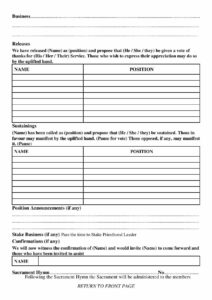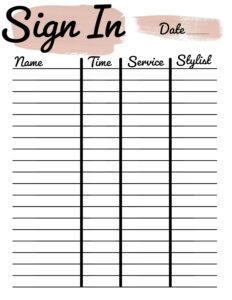In today’s fast-paced world, customers expect quick and efficient responses from businesses. A standard response time policy template is a valuable tool for any business that wants to ensure it is meeting the needs of its customers in a timely manner. This policy sets clear expectations for how quickly customers can expect to receive a response from your business, which can help to improve customer satisfaction and loyalty.
Here are some of the benefits of having a standard response time policy:
- Improved customer satisfaction: When customers know how long they can expect to wait for a response, they are more likely to be satisfied with the service they receive.
- Increased efficiency: A standard response time policy can help businesses to streamline their operations and improve efficiency. Knowing when customers can expect a response can help businesses prioritize their work and ensure that everyone is working towards the same goal.
- Reduced costs: A standard response time policy can help businesses to reduce costs by ensuring that they are not spending time responding to duplicate or unnecessary requests.
How to Create a Standard Response Time Policy
Creating a standard response time policy is a relatively simple process. Here are a few steps to follow:
- Define Your Goals: Start by defining your goals for your response time policy. What do you want to achieve with this policy? Do you want to improve customer satisfaction, increase efficiency, or reduce costs?
- Set Clear Expectations: Once you know your goals, you can start to set clear expectations for how quickly customers can expect to receive a response from your business. This should be based on a variety of factors, such as the type of request, the customer’s priority, and the availability of resources.
- Communicate Your Policy: Make sure to communicate your standard response time policy to your customers. This can be done through your website, social media, or email marketing. You should also train your employees on the policy so that they are aware of the expectations.
- Monitor and Adjust: Once you have implemented your standard response time policy, you should monitor it to see how it is working. Are you meeting the expectations that you have set? If not, you may need to adjust the policy.
Best Practices for a Standard Response Time Policy
Here are a few best practices to follow when creating a standard response time policy:
- Be realistic: When setting your response time expectations, be realistic about what you can actually achieve. Don’t set yourself up for failure by promising something that you can’t deliver.
- Be consistent: Once you have set your response time expectations, be consistent in meeting them. Customers will appreciate the predictability and will be more likely to trust your business.
- Be flexible: There may be times when you need to be flexible with your response time policy. For example, if there is an emergency, you may need to respond more quickly than usual. Be prepared to make exceptions when necessary.
- Use technology: Technology can be a valuable tool for helping you to meet your response time expectations. There are a number of different tools available that can help you to track and manage your customer inquiries.
FAQs About Standard Response Time Policy Templates
What is a standard response time policy template?
A standard response time policy template is a document that outlines how a business will respond to customer inquiries. It typically includes information about the company’s response time goals, the channels through which customers can contact the company, and the process for responding to inquiries.
Why is it important to have a standard response time policy template?
Having a standard response time policy template can help businesses to improve customer satisfaction, increase efficiency, and reduce costs. It can also help businesses to ensure that they are meeting the needs of their customers in a timely manner.
What should be included in a standard response time policy template?
A standard response time policy template should include information about the company’s response time goals, the channels through which customers can contact the company, and the process for responding to inquiries. It should also include information about how the company will handle exceptions to the policy.

